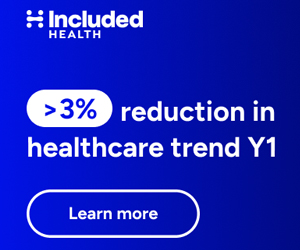

By NEIL JENNINGS & VINCE KURAITIS
This entry is part 5 of 5 in the series Platforming Healthcare — The Long View
In previous posts in this series, we have covered the definitions of Unified Digital Health platforms and whether “EHRs can become UDHPs.” In this follow-on post, we’ll talk through the requirements for success for a UDHP and which types of healthcare organizations are best suited for which types of UDHPs. This post will build on findings from the previous posts.
The Market Needs UDHPs: Key Takeaways from Previous Posts

Key Takeaway 1: The healthcare industry needs UDHPs to create a centralized, common architecture for healthcare organizations
Key Takeaway 2: The healthcare organizations leveraging UDHPs will achieve a myriad of benefits, from competitive advantages to clinical, financial, and operational gains
Key Takeaway 3: UDHPs are not all-or-nothing or mutually exclusive from EHRs. As we explored in our last post, EHRs could expand into UDHPs. These EHRs as UDHPs (or the relative platform of platforms) may be the optimal choice for some market segments. EHRs may also be accommodated into cloud-first UHDPs.
Key Takeaway 4 / Guiding Criterion: This post will focus on US regional and local health systems and outpatient groups of all sizes.
The Approach: Market -> Segments -> Options -> Fit
- For this post, we will start from the top-down market perspective, analyzing the overall market landscape.
- Once we have described the landscape, we will call out the key segments (organization types, sizes, and profiles) that we will be evaluating.
- At this point, we will approximate IT budgets and IT team sizes by organization type to determine capabilities of building as opposed to depending on partners and vendors.
- Then, we’ll review the constraints for implementation and ownership, outlining the drivers of UDHP fit.
- Next, we’ll break down the different ways UDHPs can be developed and maintained.
- Leveraging an EHR as UDHP
- License from UDHP vendor
- “Home grown” cloud-first solution
- Finally, we’ll crosswalk the segments and the optimal option for each segment, based on their specific needs and estimated IT and budgetary resources.
The Healthcare Market & Major Health System Segments
Starting with a compelling graphic from the Kaiser Family Foundation, we see a 2023 breakdown of the total US healthcare medical expenditure, totaling ~$4.9 trillion.

While the total healthcare spend that occurred in hospitals is an astounding ~$ 1.5 trillion, accounting for 31% of total healthcare spend, this leaves much of care outside the four walls of hospitals. This amount of care occurring outside of hospitals aligns with efforts to push patients into less acute care settings, emphasizing preventative, proactive medicine instead of acute, reactive medicine. As the need for UDHPs applies to more than inpatient hospitals, we will also review the other segments highlighted in the pie chart, including: outpatient clinics and practice groups, and “other health” containing services delivered at other contexts like PACs and SNFs, and Ambulatory surgical centers.
Continue reading…










